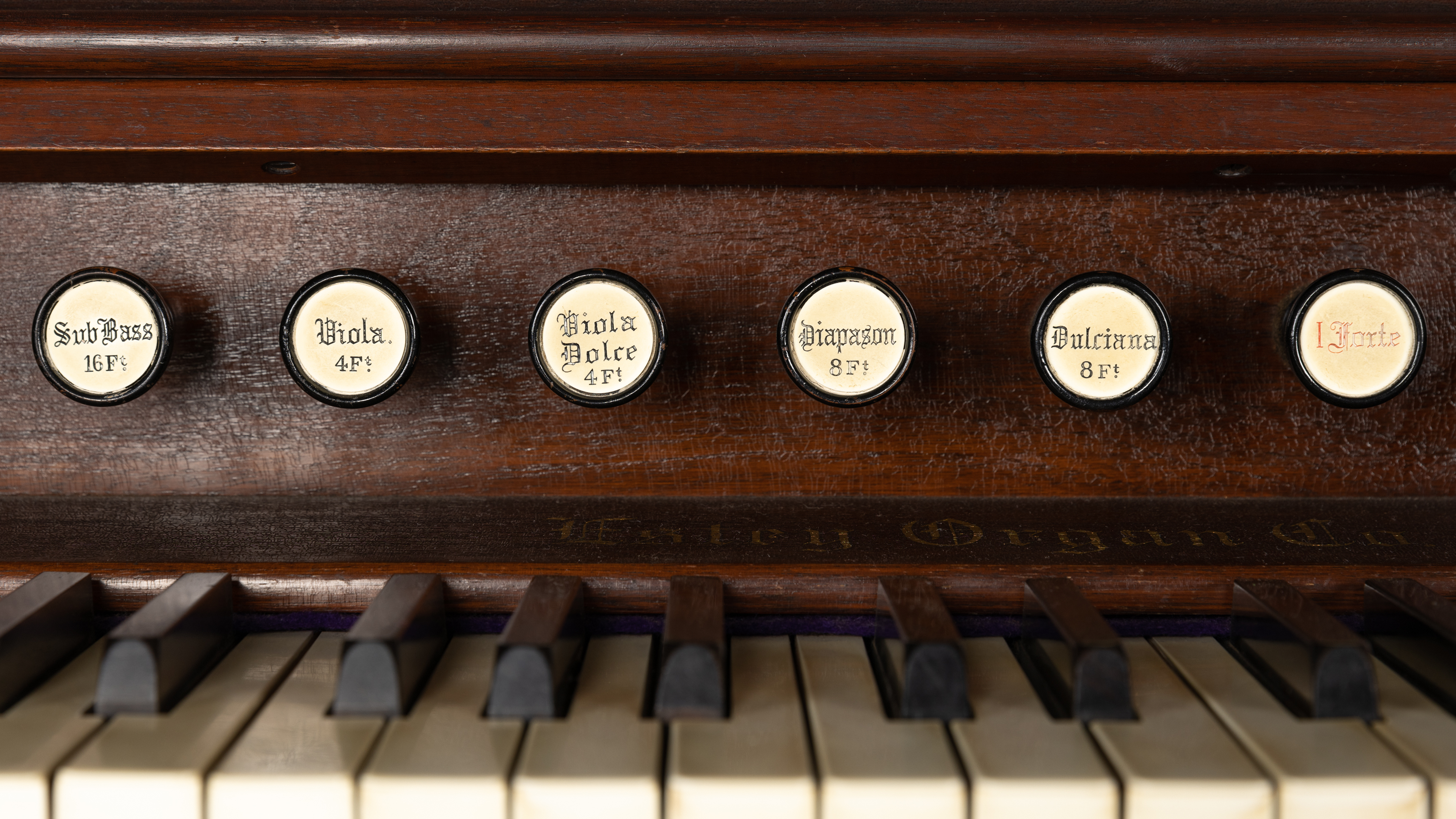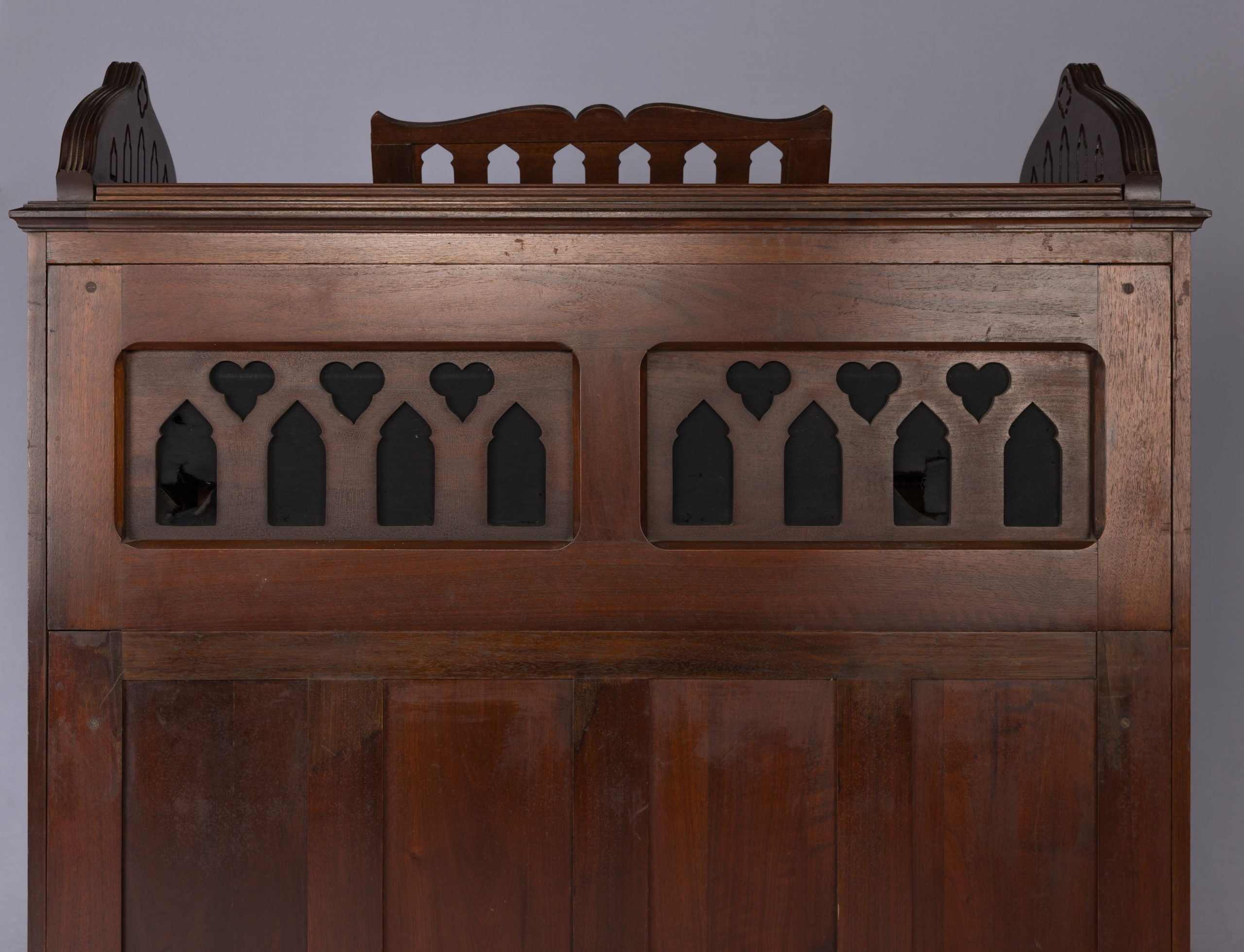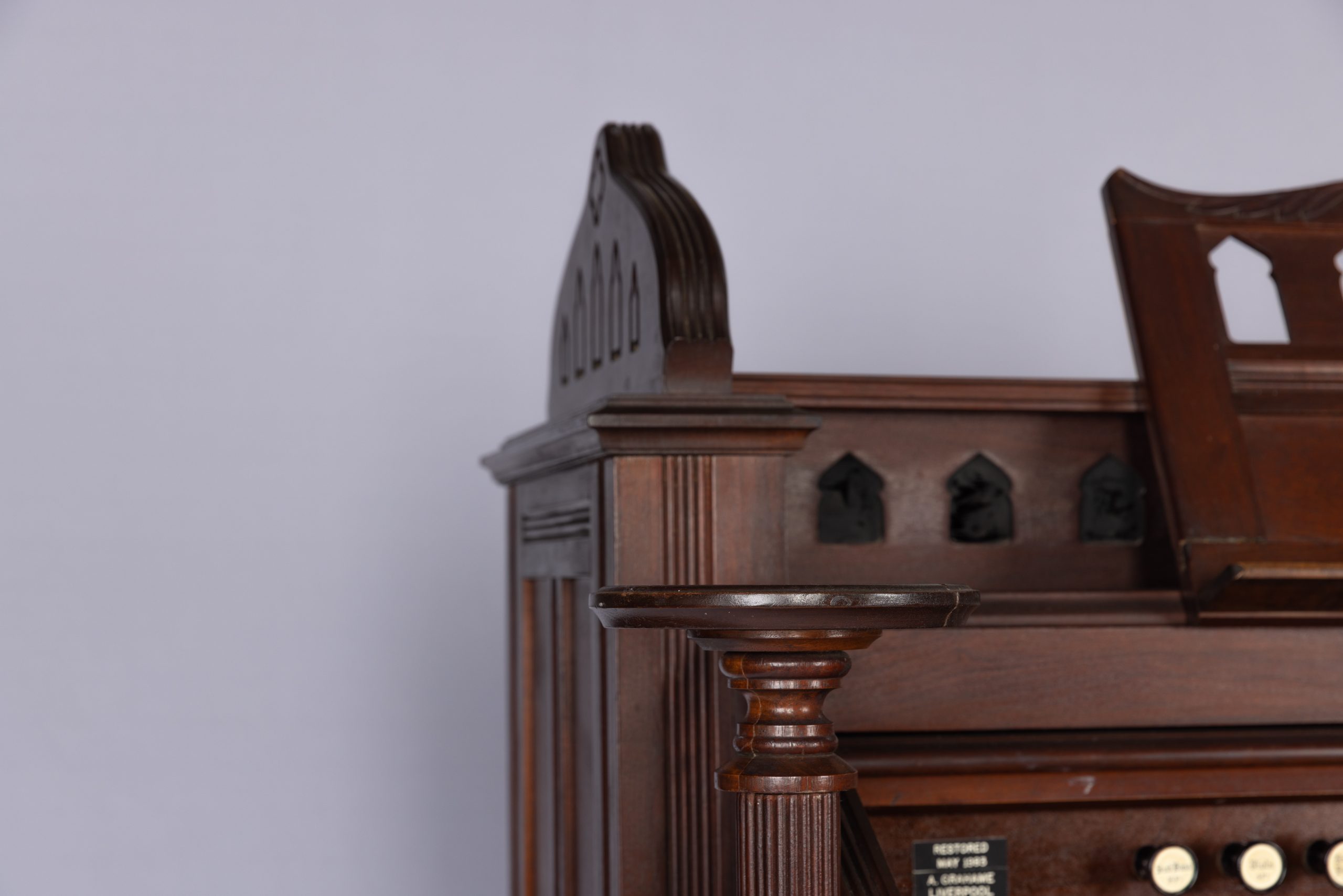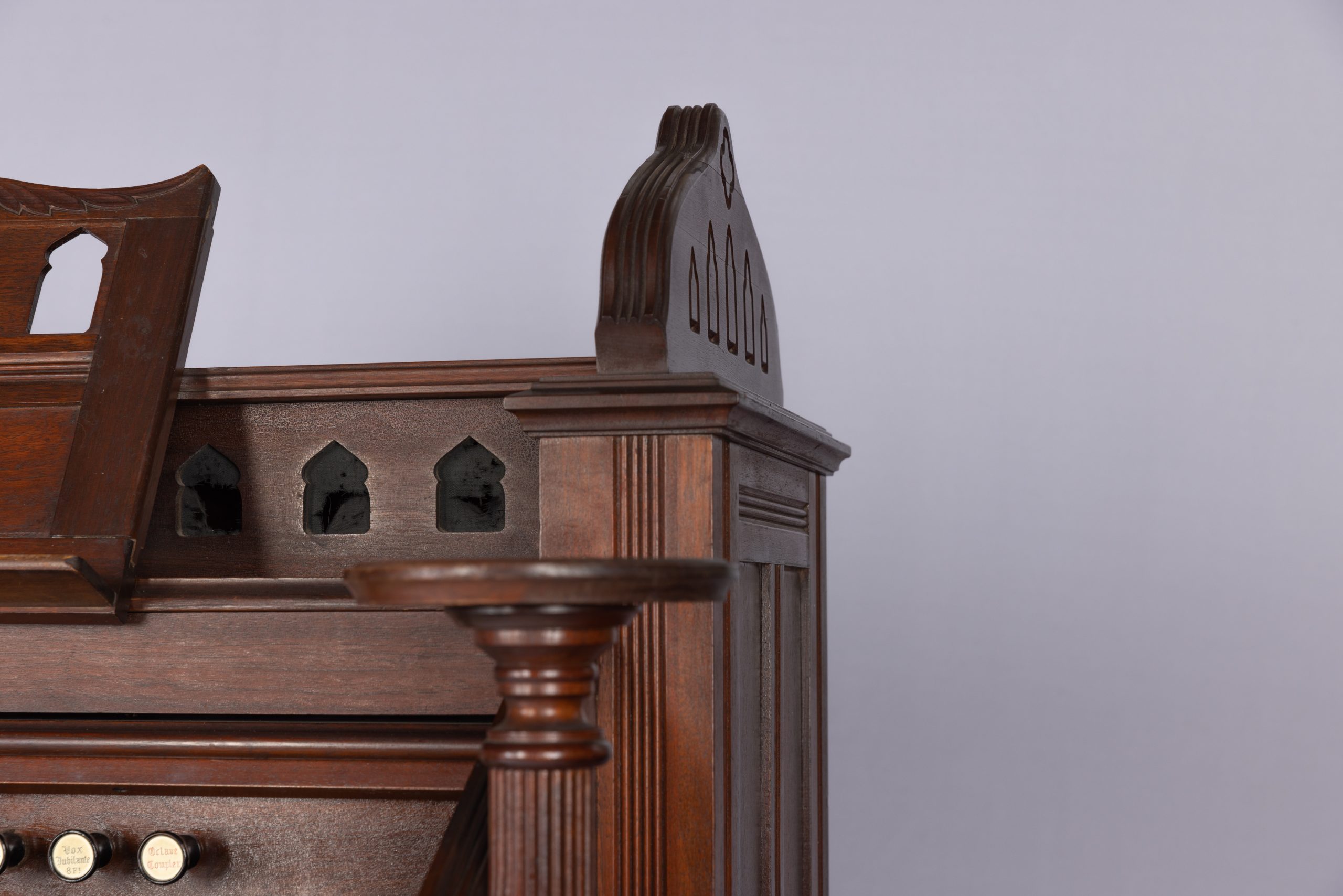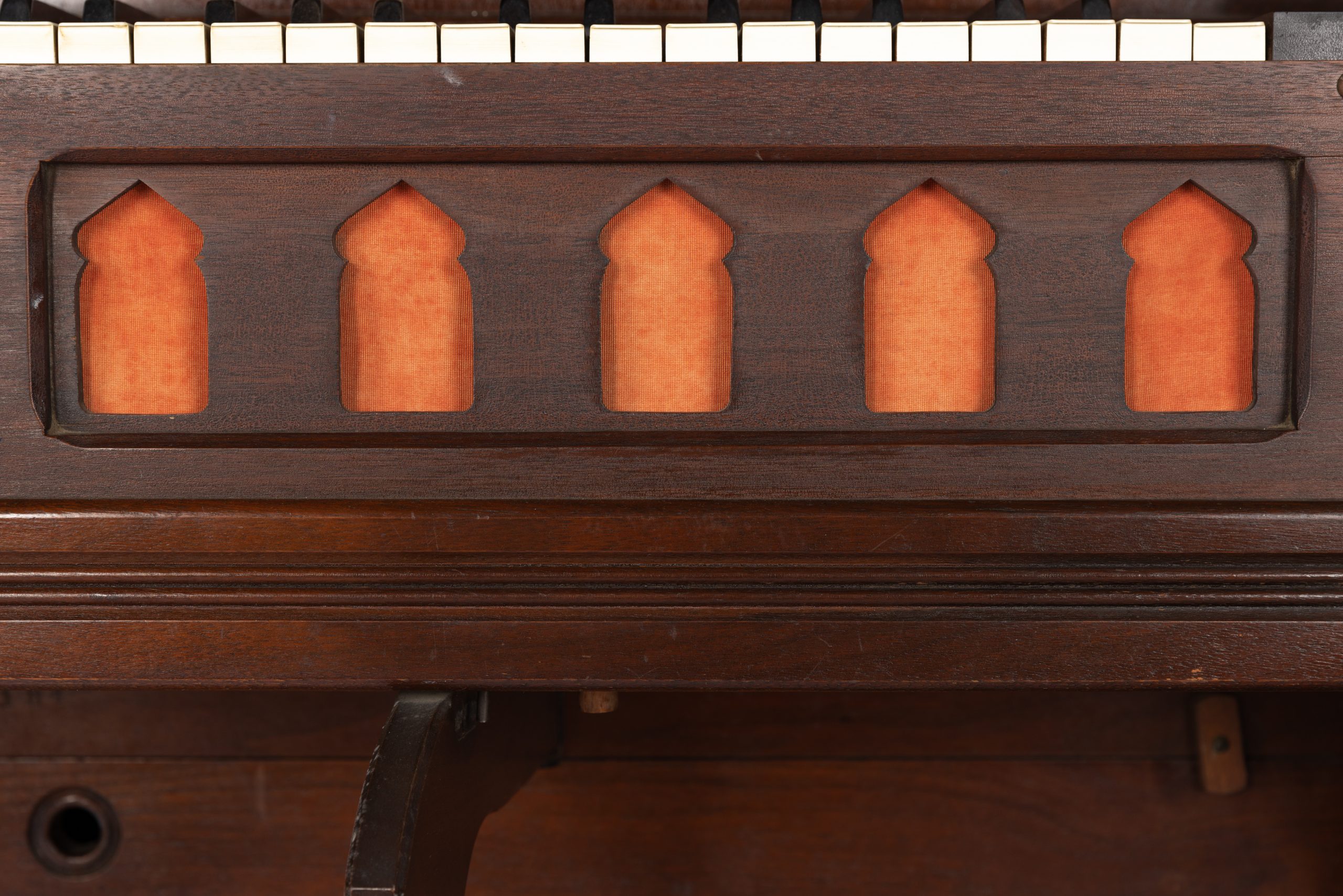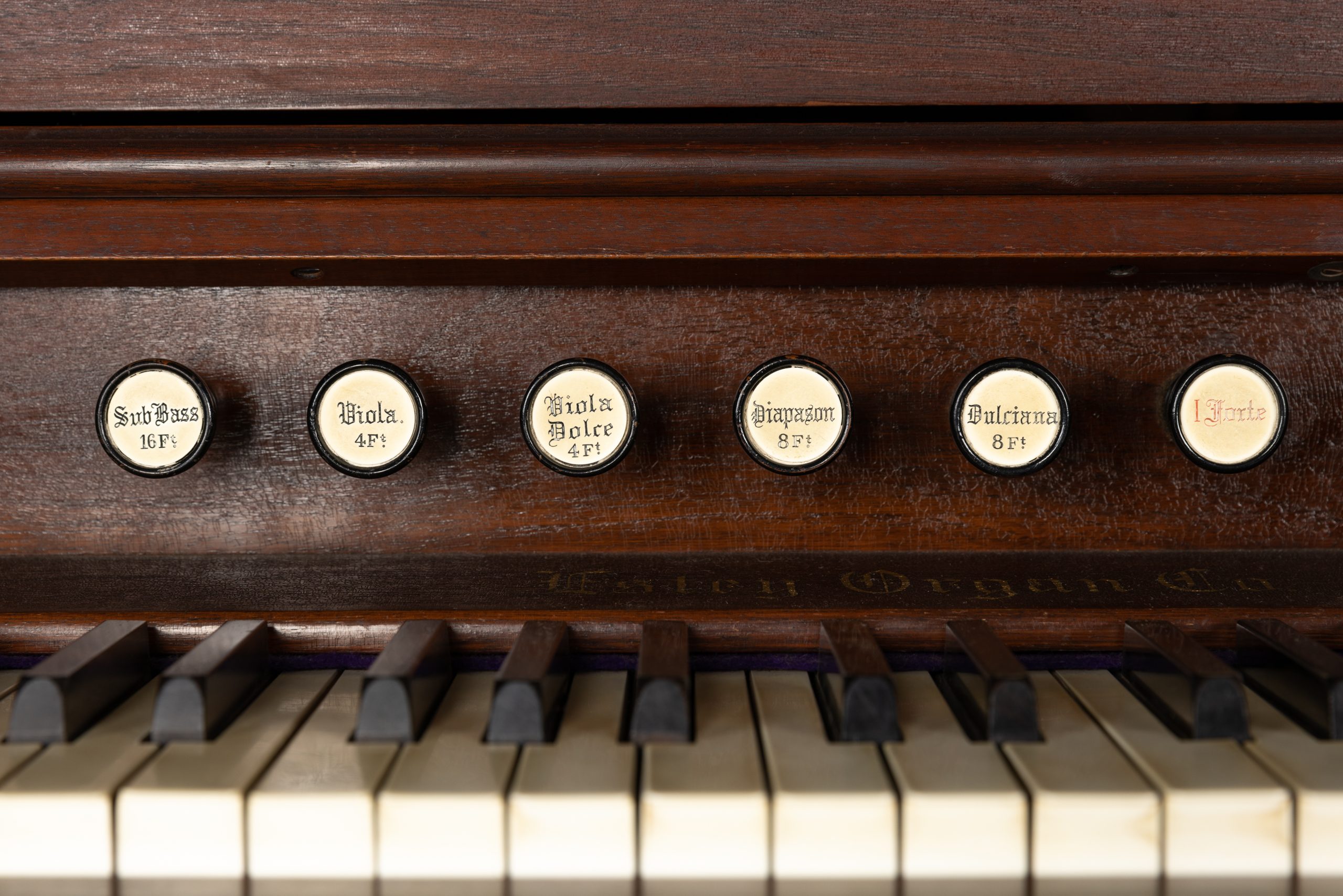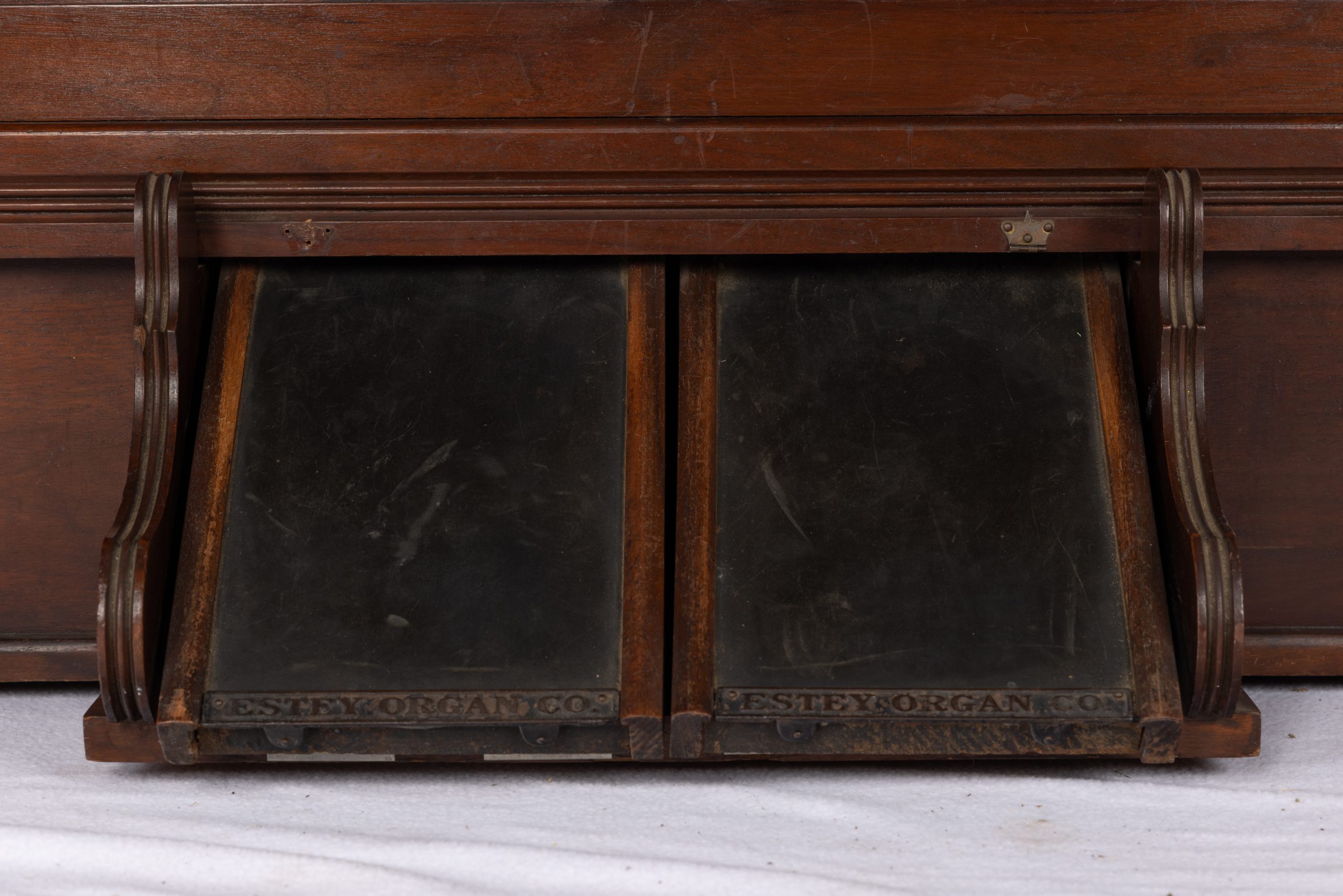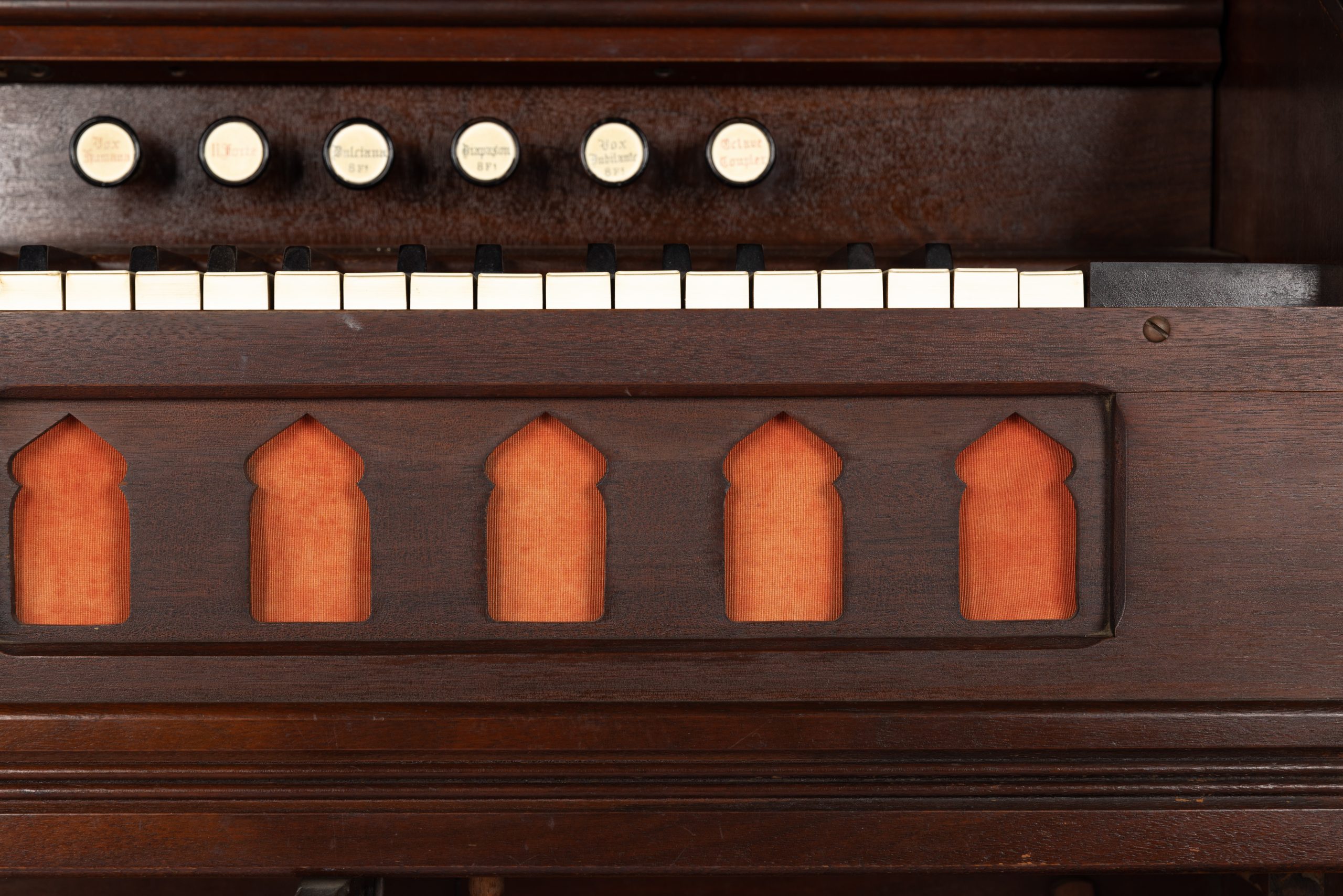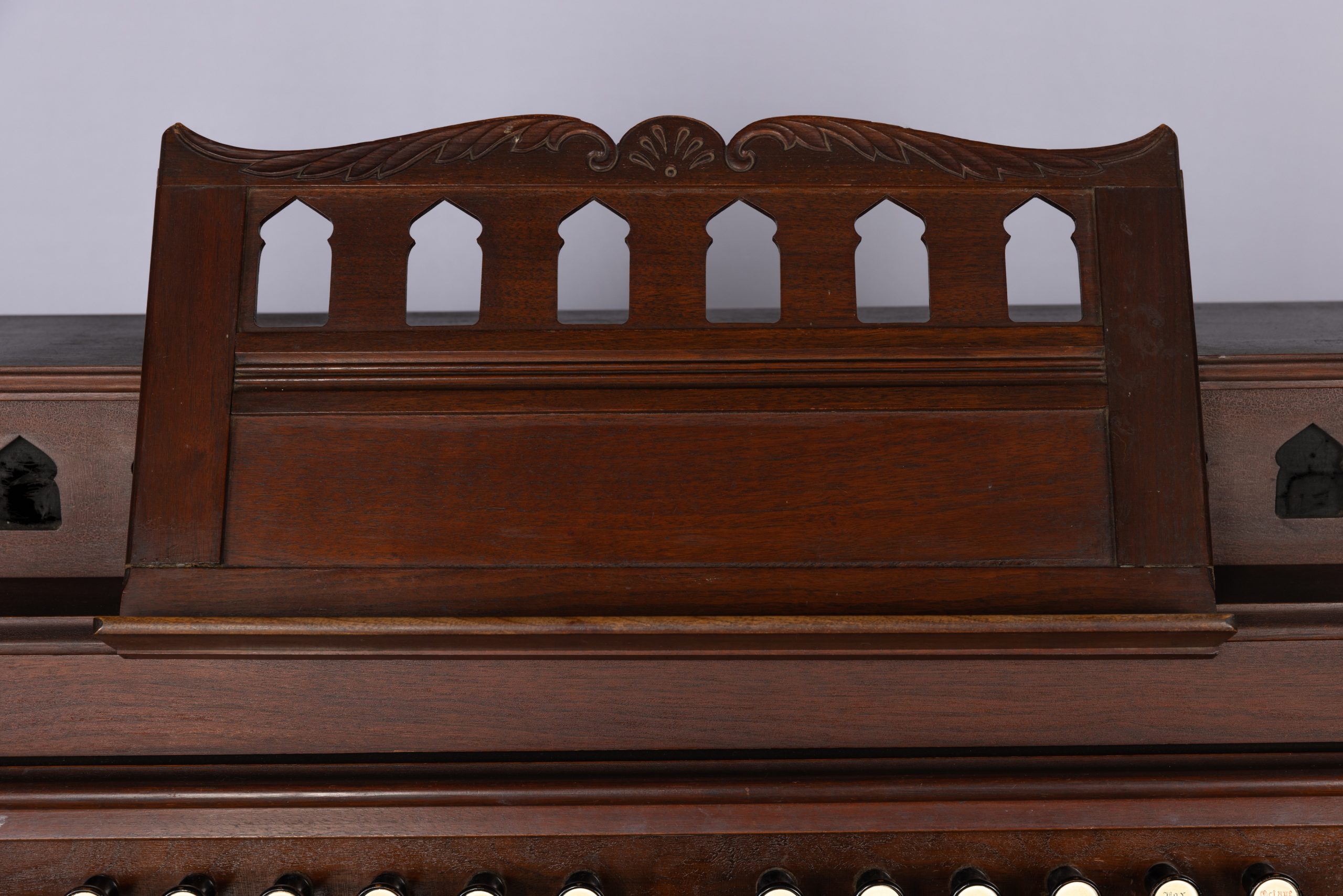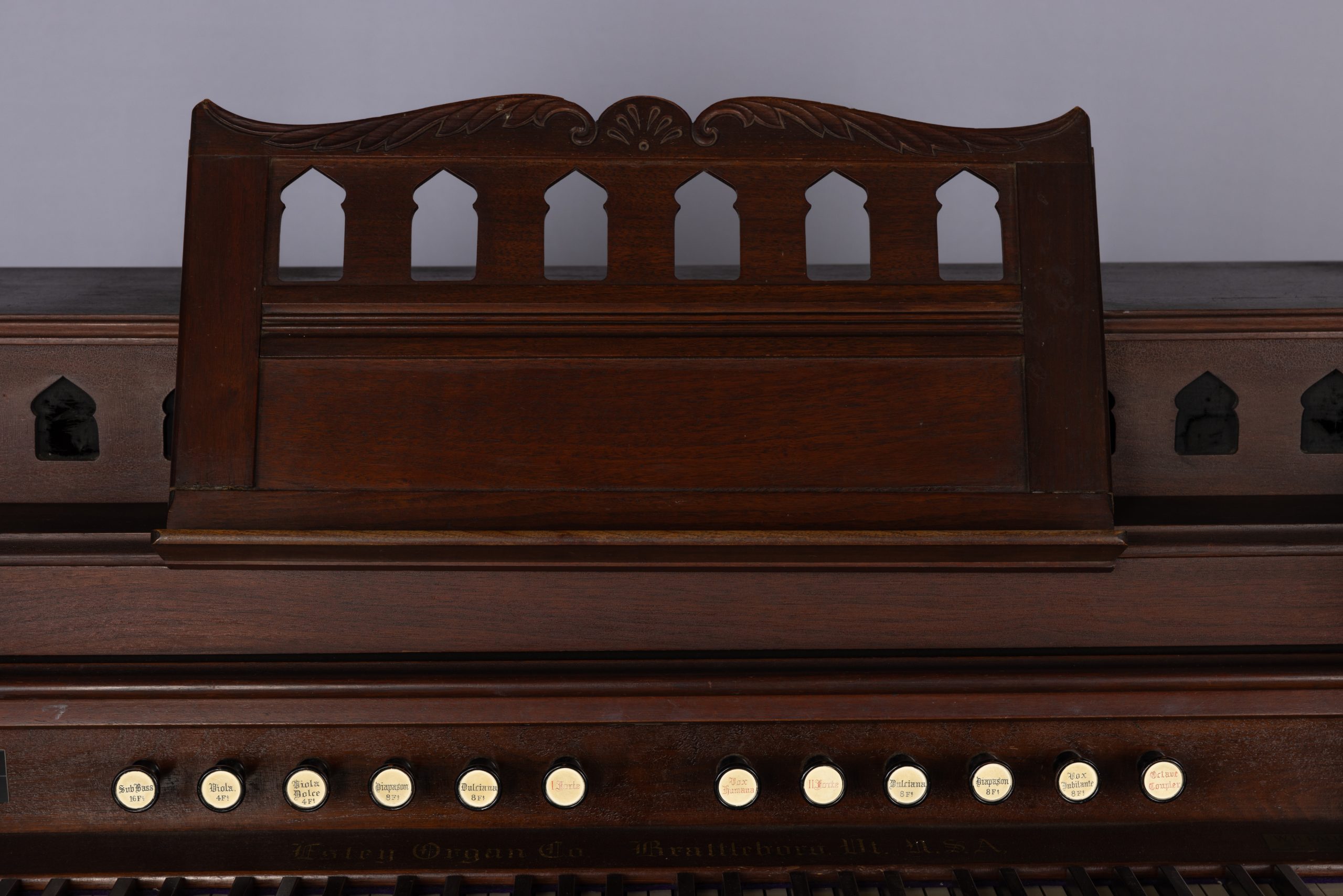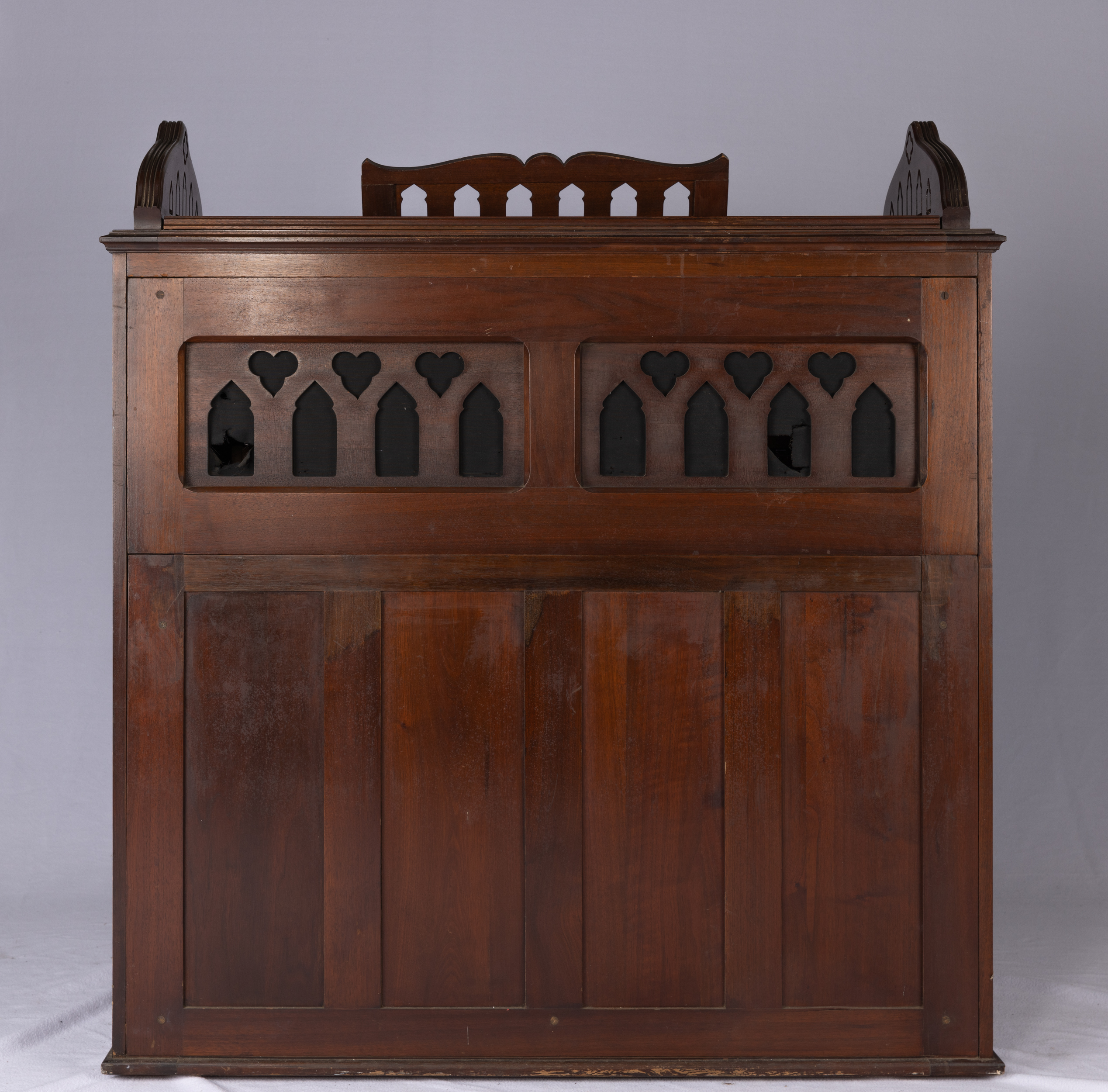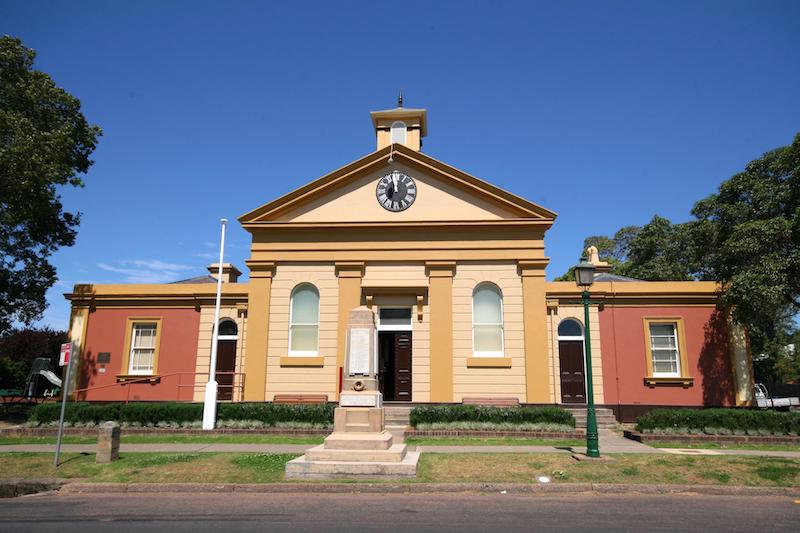Pull Out All Stops
An American Harmonium in Tenambit
While seated at this harmonium on the cold, wintery day of 15 June 1910, Vera Tollis may have rubbed her hands together, then pulled out all the instruments’ stops (knobs) to make the grandest sound possible. She was waiting for the bride to appear at the door of St Egwin’s Church, Tenambit. Then, breaking the tense silence, Vera’s feet pushed the instrument’s pedals and she began to play the dramatic strains of Mendelssohn’s Wedding March – nearly every brides’ piece of choice ever since it had been played at the wedding of Queen Victoria’s daughter in 1858.
Also known as a ‘free reed’ or pump organ, this instrument was probably installed about 1895, when the small weatherboard church was built and dedicated. Norman Swan was the first organist, then Vera Tollis, who was well-loved as a ‘skillful and sympathetic’ player. Later organists included Mrs Hodges, Mrs Milliner and Mrs Audrey Marquet.
This was one of over half a million organs manufactured by the Estey Organ Company (1872-1950s) of Vermont, United States, whose instruments were shipped worldwide for use in churches and homes. They were at the height of popularity when this elaborate example, with its multiple stops and ecclesiastic timber case was purchased for St Egwin’s. Moving the organ’s pedals inflated bellows, which pumped air to make a thin metal ‘reed’ vibrate. But maintaining constant air pressure was difficult, causing the pitch to fluctuate and giving reed organs their characteristic slightly-out of tune sound.


